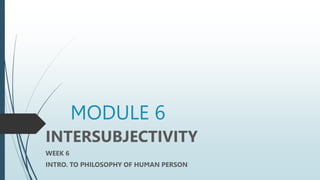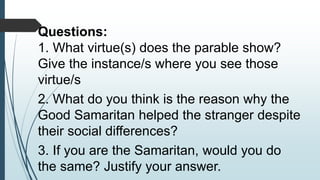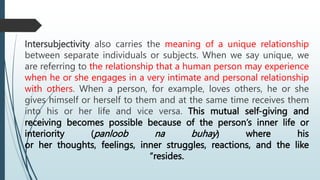This document provides an overview of a philosophy lesson on intersubjectivity. It discusses key concepts like the self and other, interpersonal relations, empathy, and alienation. Regarding intersubjectivity, it explains that this occurs when the self recognizes the other and vice versa. Deeper intersubjectivity involves intimate self-giving and receiving between individuals. The document also discusses the importance of authentic dialogue, availability to others, and embracing differences in building harmonious relationships and communities. It aims to promote understanding and respect between people in spite of negative experiences.


































































